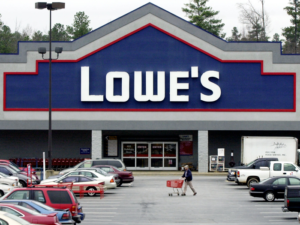FedEx is one of the world’s largest logistics companies providing shipping and transportation services to businesses all across the globe. The company started as an air cargo carrier, but today, it is one of the world’s leading shipping companies, with coverage in every part of the globe.
In order to better understand the company’s strengths, weaknesses, opportunities, and threats (SWOT), we will conduct a SWOT analysis of FedEx in this article. We will analyze the logistics company’s primary internal strengths and weaknesses as well as the external opportunities and risks to which the company is exposed. We will also look into several external factors that have influenced FedEx’s performance and identify strategies for the future.
Jump Ahead To :
Uncovering FedEx’s Strengths
When it comes to the world of logistics and transportation, FedEx is undoubtedly one of the most recognizable and dominant players in the industry. As a global courier delivery services company, FedEx has been delivering packages and documents for over four decades. It has established a strong reputation for providing reliable and efficient services to its customers worldwide. In this part of the blog post, we will conduct a SWOT analysis of FedEx to identify the strengths that have contributed to its success over the years. From its extensive global network to its technological innovation and strategic partnerships, we will explore the key factors that have made FedEx a powerhouse in the logistics industry.
Strong Brand Reputation & Presence
FedEx is a longtime leader in the shipping and delivery sector. In fact, the company is acclaimed as the company that has invented and set the benchmark for many of the industry standards that are deployed in today’s world. Thus it should come as no surprise that FedEx is one of the most well-known companies in the world. Its great delivery system and accurate record-keeping make up a potent trifecta that contributes to its stellar reputation.
Its good reputation in more than 220 countries across the globe is one of its major strengths that has brought customers to the company. The shipping giant has always been at the forefront when it comes to technology innovation. This has helped them stay on top of their game and maintain high-level customer satisfaction rates.
Industry Leader Based On Its Market Share
FedEx maintains a sizable market share in many of the sectors in which it competes by making use of its first-mover advantage in numerous segments. Looking at the starting of the company in 1971 as only an air cargo carrier, the company’s accomplishments seem more astounding.
In addition to providing comprehensive supply and logistics solutions from the manufacturing plant to the end user, it currently works across numerous industries. It can provide sophisticated reverse logistics infrastructure solutions as necessary.
Extensive Global Infrastructure, Unlike Any Other Company
FedEx is a global leader when it comes to shipping and delivery services. With an impressive network that spans over 220 countries and territories, FedEx offers its clients the opportunity to send packages just about anywhere in the world. Looking at the start of the company in 1971, It’s no surprise that this company has become so incredibly successful. Their customer satisfaction is a reflection of the time and money spent in making sure their customers get exactly what they need.
It is not surprising to discover that FedEx has maintained its position as the largest air operator in the world, given that it was primarily an air-based carrier. Although North America evidently remains its core market, its expansion into emerging economies has given it a solid presence outside of the United States.
Examining the Weaknesses of FedEx
Despite its success and dominance in the logistics industry, FedEx, like any other company, has its fair share of weaknesses and challenges that it must navigate to stay ahead of the competition. In this blog post, we will conduct a SWOT analysis of FedEx to identify some of the company’s weaknesses. From increasing competition and regulatory challenges to reliance on a single customer, we will explore the key factors that threaten FedEx’s future success. By examining these weaknesses, we can gain a better understanding of the challenges that FedEx must overcome to maintain its position as a leader in the logistics industry.

Poor Customer Service
One of the many problems faced by FedEx is poor customer service. Recently, with reports of poor employee etiquette, customers have started to question FedEx’s reliability as a shipping company.
Employees not being courteous while handling the packages is one of the primary reasons for this. There have also been cases of delivery agents misbehaving with customers. Furthermore, reports suggest that packages are often mishandled or misplaced due to inadequate care given by employees. There are also claims of delays in deliveries due to negligence on the part of the staff members. Thus, as these delivery agents are the primary representation of the company, it is crucial for the company to make sure that its reputation is not affected due to negligence by its delivery partners.
Limited diversification into e-commerce
While its main rivals, such as amazon, are utilizing their own logistical capabilities in their e-commerce activities and infrastructure, FedEx has always concentrated on its core expertise of logistic services. It makes sense that FedEx would assess how it could help an online retailer.
Overreliance of the company on the North American market
Although the company has expanded its operations to several other continents, the company still sticks true to its roots in North America. FedEx must explore and strengthen its ground in other parts of the world as well, such as Asia, Europe, the Middle East, and Africa, as these markets offer a great opportunity for the company to expand.
Exploring The Opportunities Of FedEx
As a global courier delivery services company, FedEx has been a driving force in the logistics industry for over four decades. Despite its longstanding success, there are always new opportunities that arise in the ever-evolving business world. In this part of the blog post, we will conduct a SWOT analysis of FedEx to identify the opportunities that the company has to further expand its business and reach.
Adopting More Carbon-Neutral Operations
With the increasing concern about the carbon footprint of these big companies, consumers today are shifting their interest to businesses that support the environment and operate in an ecologically responsible manner to reduce their carbon footprints. Furthermore, governments are increasing their pressure on businesses to abide by newer and stricter rules. Adopting more eco-friendly ways to provide their service can provide a great opportunity for FedEx by increasing its audience.
Integrating AI Into Its Operation
Modern technology enables businesses to provide services that provide them with a competitive advantage. In order to create artificial intelligence solutions that might potentially provide customers with almost real-time package tracking and enhance the company’s analytical capabilities, which will lead to even greater efficiencies, FedEx has teamed with Microsoft. These fascinating technical advancements are just getting started.
Affiliation With Other Existing Companies.
FedEx can use other smaller companies and acquisitions for its growth. These companies, which already have an audience, can provide new marketplaces for FedEx. The company can partner or purchase with existing players within these sectors.

Mapping out FedEx’s Threats
The Consequences Of The Anti-Globalization Movement
The ever-growing sentiments of people to support local businesses can harm FedEx’s expansion in different parts of the world. These initiatives are gaining momentum in countries that are attempting to curb their reliance on imports by producing locally. Thus, FedEx’s global business, which is supported by international trade, has a major threat from this initiative.
Fluctuations In Fuel Prices
To support its transportation business, FedEx relies on a fleet of different vehicles, most of which burn fossil fuels. The fuel that FedEx’s vans use is one of its major expenses. As a result, any changes in gasoline prices will have an effect on its operating expenses. It will be less affected by changes in gasoline prices if it uses a variety of vehicles.
Competition from within its own sector
The major rival of FedEx in the United States, UPS, consistently tops the list of regional shipping businesses. FedEx and UPS use various business models within the same industry, which makes it possible to compare their individual performances in an intriguing way.
When it comes to airborne packages, which are frequently time-sensitive, FedEx is best, whereas UPS dominates the market for ground-based packages. Also, the market has received competition from one of its primary clients as a result of Amazon severing its ties to FedEx. FedEx confronts fierce competition from businesses in Asia in the global market.
Furthermore, Amazon bought 50 aircraft to lessen its dependence on FedEx for shipment.
Although trade is the basis of the shipping and logistics sectors, any circumstances that have a negative influence on the amount of trade between two regions will have an effect on the operations of a logistics firm like FedEx. Trade volumes between China and the US were significantly impacted by the trade spat between the two countries, which in turn reduced demand for FedEx’s services.
SWOT Analysis Summary
FedEx is a strong and stable company that has survived and thrived in the competitive business environment for years. Its strengths lie in its brand reputation, well-established customer base, efficient global network, and incredible marketing strategies. Its weaknesses include a lack of diversification, employee etiquette, and high costs.
Similarly, the opportunities for growth include increased demand for its services, expanding into new markets, and utilizing innovative technologies. The threats to its success are the emergence of new competitors, fluctuating fuel prices, and changes in tax laws. In order to meet global demand and maintain its sustainable operations, the company must take proactive steps to identify and address its weakness and try to eliminate its threats. This will help the company ensure successful outcomes in the future.
Conclusion
Despite its longstanding success, FedEx must continue to adapt and innovate to stay ahead of the competition and overcome the challenges it faces. By leveraging its strengths and capitalizing on opportunities, while addressing its weaknesses and mitigating potential threats, FedEx can continue to provide reliable and efficient logistics solutions to its customers worldwide. As the logistics industry continues to evolve, it will be interesting to see how FedEx navigates these changes and maintains its position as a leader in the industry.
If you liked this article, checkout the analysis we performed on UPS!






